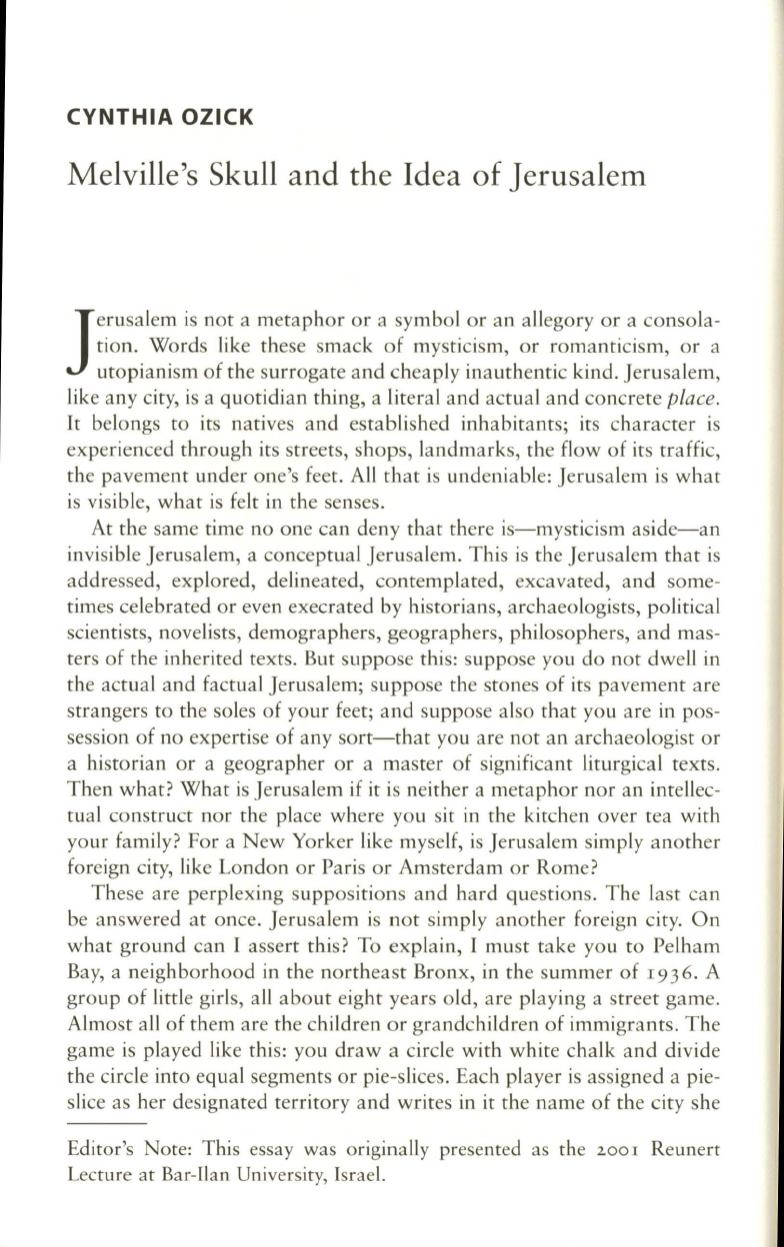
CYNTHIA OZICK
Melville's Skull and the Idea of Jerusalem
J
erusalem is not a metaphor or a symbol or an allegory or a consola–
tion. Words like these smack of mysticism, or romanticism, or a
utopianism of the surrogate and cheaply inauthentic kind. Jerusalem,
like any city, is a quotidian thing, a literal and actual and concrete
place.
It
belongs to its natives and established inhabitants; its character is
experienced through its streets, shops, landmarks, the flow of its traffic,
the pavement under one's feet. All that is undeniable: Jerusalem is what
is visible, what is felt in the senses .
At the same time no one can deny that there is-mysticism aside-an
invisible Jerusalem, a conceptual Jerusalem. This is the Jerusalem that is
addressed, explored, delineated, contemplated, excavated, and some–
times celebrated or even execrated by historians, archaeologists, political
scientists, novelists, demographers, geographers, philosophers, and mas–
ters of the inherited texts. But suppose this: suppose you do not dwell in
the actual and factual Jerusalem; suppose the stones of its pavement are
strangers to the soles of your feet; and suppose also that you are in pos–
session of no expertise of any sort-that you are not an archaeologist or
a historian or a geographer or a master of significant liturgical texts.
Then what? What is Jerusalem if it is neither a metaphor nor an intellec–
tual construct nor the place where you sit in the kitchen over tea with
your family? For a New Yorker like myself, is Jerusalem simply another
foreign city, like London or Paris or Amsterdam or Rome?
These are perplexing suppositions and hard questions. The last can
be answered at once. Jerusalem is not simply another foreign city. On
what ground can I assert this? To explain, I must take you to Pelham
Bay, a neighborhood in the northeast Bronx, in the summer of
1936.
A
group of little girls, all about eight years old, are playing a street game.
Almost all of them are the chi ldren or grandchildren of immigrants. The
game is played like this: you draw a circle with white chalk and divide
the circle into equal segments or pie-slices. Each player is assigned a pie–
slice as her designated territory and writes in it the name of the city she
Editor's Note: This essay was originally presented as the
200I
Reunert
Lecture at Bar-Ilan University, Israel.


